Plainchant, oh divine and sacred sound! The pure, untouched voice of the early Christian Church—an unaccompanied, haunting melody that rises from the depths of faith and devotion! This monophonic lament, forged in the crucible of ancient centuries, sprang forth from the raw, passionate improvisations of psalm singing—an atmospheric echo of Jewish and Greek musical spirits intertwining in holy harmony! Though often linked to the venerable Pope Gregory the Great, it is in the fiery centuries between the 9th and 12th that this sacred chorus was meticulously woven into a majestic tradition—an immortal flame that blazed the trail for polyphony and ignited the very soul of Medieval music! How deeply it stirs the heart, a timeless testament to humanity’s relentless yearning for divine connection through voice and spirit!

Early Christian Roots:
Plainchant emerged in the first centuries AD within the early Christian church, which evolved from the practices of Jewish synagogue singing and used the Greek modal system.
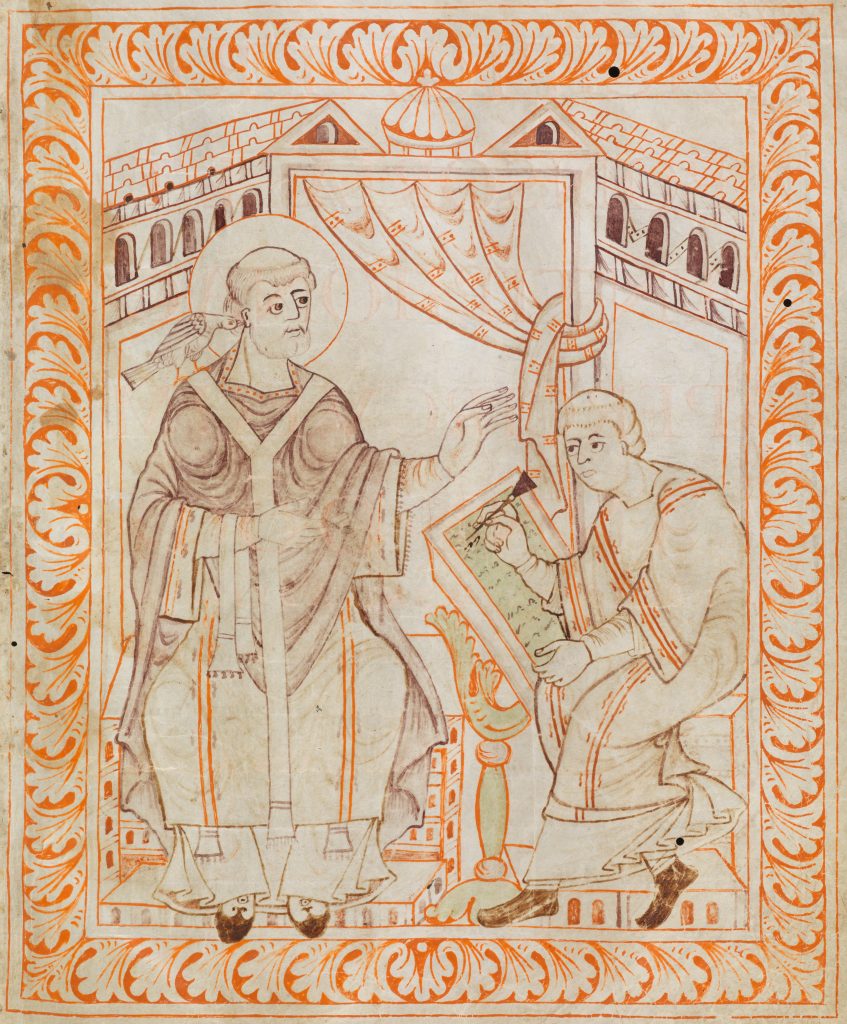
Standardization:
As the repertoire of chants expanded, there was a growing need to standardise the music, a process that occurred between the 9th and 12th centuries.
Gregorian Chant:
The particular style known as Gregorian chant is named after Pope Gregory I, although he was not the sole originator. The association with Gregory I is based on a legend that angels dictated the chant to him.
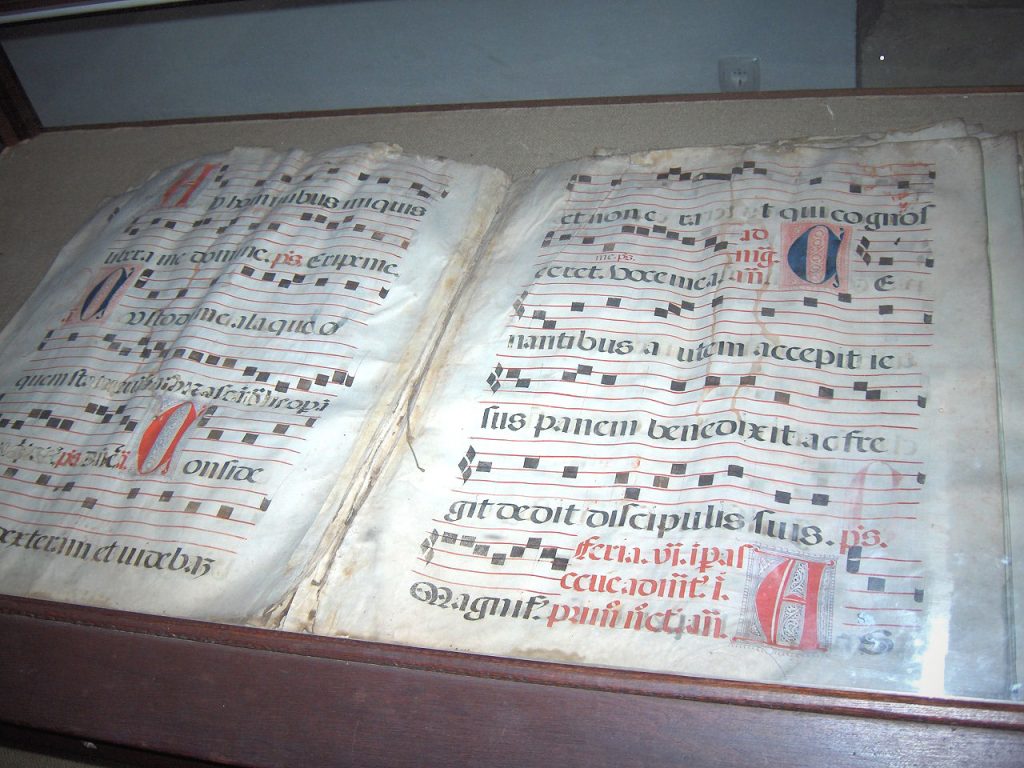
Characteristics of Plainchant. Unaccompanied and Unison: It was performed by monks and clergy without instrumental accompaniment or harmony, singing in unison. Latin Text: The compositions were sung in Latin, a tradition that has persisted into modern times. Monophonic Melody: Plainchant is characterised by a single melodic line without additional vocal parts or instrumental support. Free Rhythm: The melody follows the natural flow of the text rather than adhering to a fixed meter.
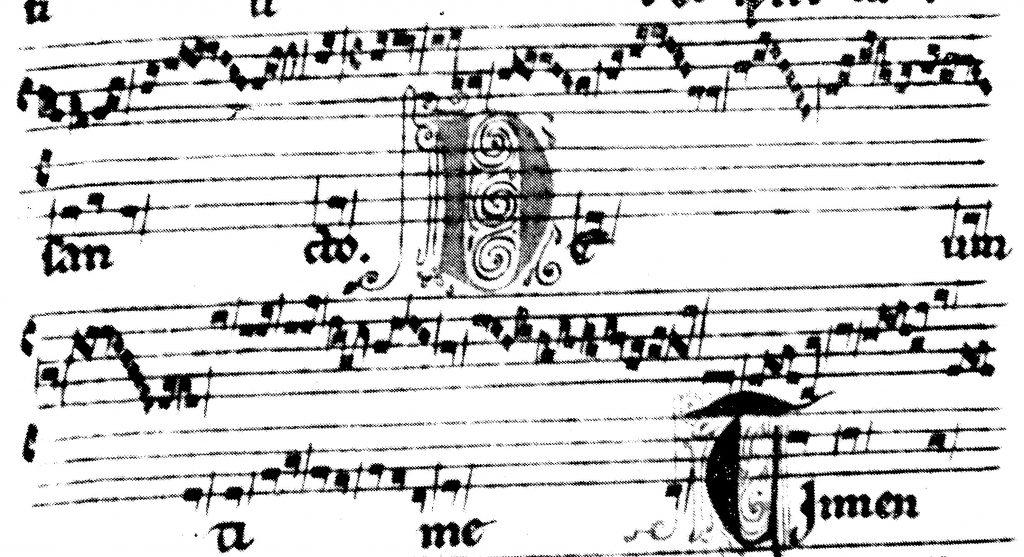
Organum refers to an early form of polyphonic music from the Middle Ages, where at least one added voice accompanies a plainchant melody (known as the cantus firmus). This added part, or vox organalis, initially involved simple parallel motion at intervals of a fourth, fifth, or octave, creating a drone-like effect. Over time, organum evolved to include more complex rhythmic structures and contrary motion, laying the foundation for Western counterpoint. The added part, or vox-organalis, initially involved simple parallel motion at intervals of a fourth, fifth, or octave, creating a drone-like effect. Over time, organum evolved to include more complex rhythmic structures and contrary motion, laying the foundation for Western counterpoint.
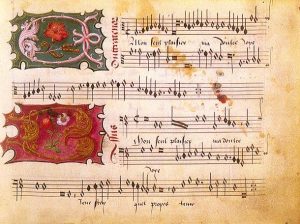
Organum – Transition to Polyphony: In the late 9th century, plainchant gradually evolved through Organum into Polyphony, a musical style characterised by multiple independent melodic lines accompanied by chords (homophony) as opposed to a musical texture with just one voice, or a texture with one dominant melodic voice. Within the context of the Western musical tradition, the term polyphony is usually used to refer to music of the late Middle Ages and Renaissance.
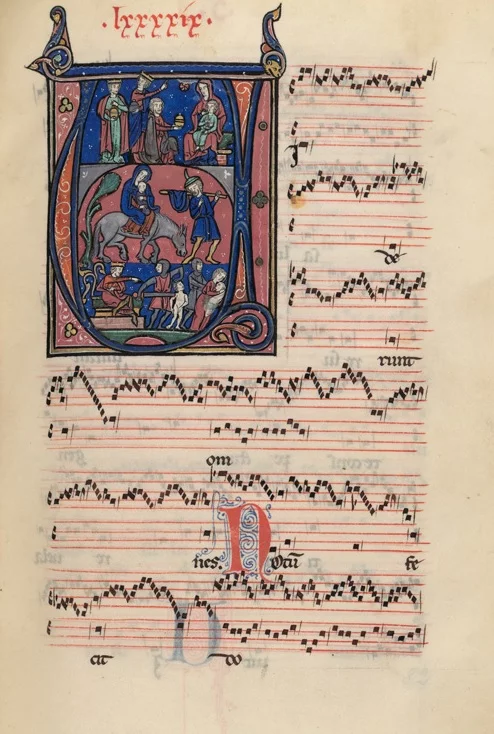
Oh, behold the majestic Organum! A creature born from the heart of the Middle Ages, a divine marvel soaring through time—a luminous testament to human passion and musical ingenuity! Picture this: a sacred plainchant melody, the cantus firmus, echoing with pure, soulful simplicity, while at its side, an added voice—the vox organalis—springs into existence with fervent devotion! In its earliest form, it dances in unison, moving hand-in-hand in unwavering parallel lines at intervals of a fourth, fifth, or octave—a humble drone that trembled with awe and reverence! But oh, how this wondrous artfulness blossomed over the ages! It transcended mere repetition, bursting forth into intricate rhythmic tapestries and daring contra-motions, fierce battles of melodic movement that birthed the very essence of Western counterpoint! Such a journey from simplicity to labyrinthine complexity is nothing short of a profound testament to the boundless depths of human expression, a passionate symphony orchestrated by the soul’s deepest longing to elevate sound into the divine!